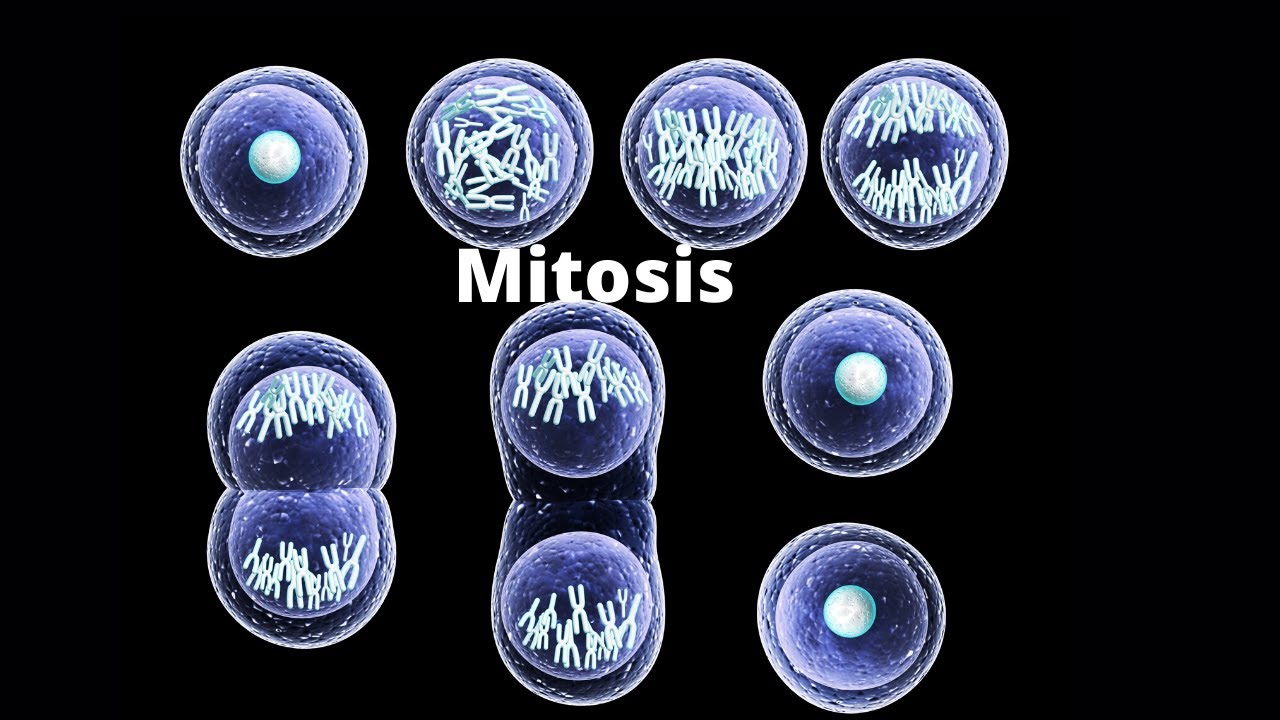When a cell divides, it goes through four stages called mitosis. These phases of mitosis are crucial to the lifecycle of a living organism because they ensure that each new cell will have the same number of chromosomes and genetic information.
The 4 Stages of Mitosis
There are four main stages to mitosis: prophase, metaphase, anaphase, and telophase. Each of these stages involves some kind of change in the structure of the nucleus. The changes each phase brings about are aimed at helping the cells get ready for division, so they can have a good chance of dividing properly.
In prophase, the chromatin fibers that make up a cell’s DNA condense and form chromosomes within the nucleus. Each chromosome is made up of two identical sister chromatids that are joined at the centromere (a point at the center of each chromosome).
The chromosomes are connected to spindle fibers in prophase and start to move toward the center of the cell, where they will become a part of an organelle known as the mitotic spindle. The spindle fibers then attach to kinetochores that are located at the centromere of each chromosome.
When all the chromosomes are in the mitotic spindle, the cell moves to the next phase, metaphase. In this phase, the cell checks to see whether all the chromosomes are at the metaphase plate with their kinetochores correctly attached to microtubules from opposite spindle poles. If any of the chromosomes aren’t at the metaphase plate, the cell pauses and goes back to synthesis to fix that problem before continuing on to anaphase.
During metaphase, the nuclear membrane breaks down into tiny vesicles that are filled with genetic material. As the vesicles break down, they release the sister chromatids that had been stuck inside the nuclear membrane. The sister chromatids are then pulled away from the nuclear membrane, and they begin to separate into individual chromosomes that are ready to split up into daughter cells.
At this point, the two nuclei of each cell will be separated by a ring of protein that pinches them along a crease known as a cleavage furrow. This allows the two cells to separate and start a separate “life.”
The daughter cells will then begin to grow, producing proteins and other cytoplasmic organelles, as well as replicating their own chromosomes. The cycle begins again, and the process of mitosis will repeat itself.
Anaphase is the final phase of mitosis. In anaphase, the sister chromatids are pulled apart into their own separate chromosomes and move to opposite ends of the cell.
Chromosomes will then be pulled apart from the spindle fibres that aren’t attached to them, and they’ll push their own spindle fibres out of the way as they pull them to opposite ends of the cell. This makes the cell longer, so it can be divided.
This is the last phase of mitosis and marks the end of the cell division process. The daughter cells are now ready to begin their own cellular lives, and they can go on to reproduce themselves in the same way as the mother cell.




